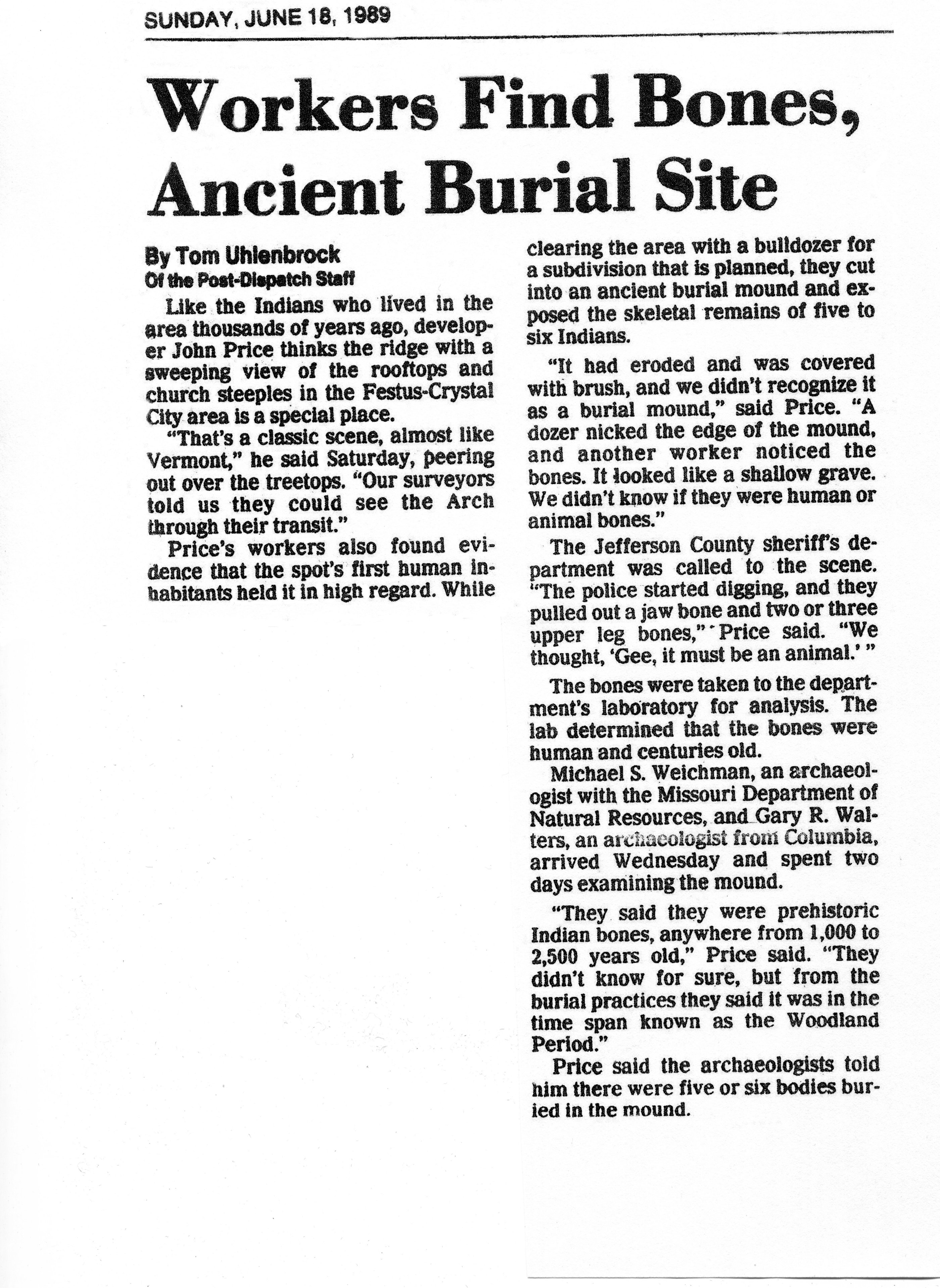They are not to be sold or reproduced for any commercial purpose, or used on any other web site.


Workers Find Bones,
Ancient Burial Site
By Tom Uhlenbrock of the Post Dispatch Staff
Sunday, June 18, 1989
Like the Indians who lived in the area thousands of years ago, developer John Price thinks the ridge with a sweeping view of the rooftops and church steeples in the Festus-Crystal City area is a special place.
"That's a classic scene, almost like Vermont," he said Saturday, peering out over the treetops. "Our surveyors told us they could see the Arch through their transit."
Price's workers also found evidence that the spot's first human inhabitants held it in high regard. While clearing the area with a bulldozer for a subdivision that is planned, they cut into an ancient burial mound and exposed the skeletal remains of five to six Indians.
It had eroded and was covered with brush, and we didn't recognize it as a burial mound," said Price. "A dozer nicked the edge of the mound, and another worker noticed the bones. It lossed like a shallow grave. We didn't know if they were human or animal bones."
The Jefferson County sheriff's department was called to the scene. "The police started digging, and they pulled out a jaw bone and two or three upper leg bones," Price said. "We thought, 'Gee, it must be an animal."
The bones were taken to the department's laboratory for analysis. The lab determined that the bones were human and centuries old. Michael S. Weichman, an archaeologist with the Missouri Department of Natural Resources, and Gary R. Walters, and archaeologist from Columbia, arrived Wednesday and spent two days examining the mound.
"They said they were prehistoric Indian bones, anywhere from 1,000 to 2,500 years old," Price said. "They didn't know for sure, but from the burial practices they said it was in the time span known as the Woodland Period." Price said the archaeologists told him there were five or six bodies buried in the mound. The archaeologists also uncovered what they called a "box grave" a few feet from the mound. That grave, which was empty, consisted of a coffin-shaped hole lined with large limestone rocks.
"They said that grave was later, about 1,000 years old, and was from the Mississippian Period," Price said. "They said there was never a body in that grave or there would have been stains in the soil."
A recently enacted state law requires that skeletal remains be reburied if they are not judged to be valuable for research. Price said the archaeologists apparently decided that was the case with those in the burial mound, and they agree that the bones should be re-interred.
Price's workers reshaped the mound and will reseed the area. "Whoever buys the land, we'll have to inform him that the burial mound is there," he said.
Evelyn Voelker, executive director of the American Indian Center of Mid America in St. Louis, said Indian spiritual leaders will preside over a ceremony Sunday to return the bones to the mound. Voelker asked that the exact location of the mound be withheld, to avoid the possibility of problems with artifact hunters.
©2021 Jefferson County Missouri Heritage & Historical Society
